AI is quickly becoming a powerful creative partner, changing how we move ideas from our minds to the screen. Instead of starting with a blank page, we can now collaborate with tools that help us brainstorm, design, and structure our stories. To get the most out of this new partnership, it helps to understand what makes it possible. We’ll explore the essential AI presentation trends that are powering this creative revolution. From AI that can generate entire presentations from a simple prompt to systems that learn without human supervision, you’ll get a clear picture of how technology is augmenting our creativity.
What are the latest AI presentation trends?
Artificial intelligence is evolving quickly, and it’s changing how we approach everything from daily tasks to major projects. For anyone who creates and delivers presentations, these changes bring exciting new possibilities. Understanding the key AI presentation trends can help you work smarter, create more compelling content, and stay ahead of the curve. Let’s look at four major trends that are shaping the future of work and creativity.
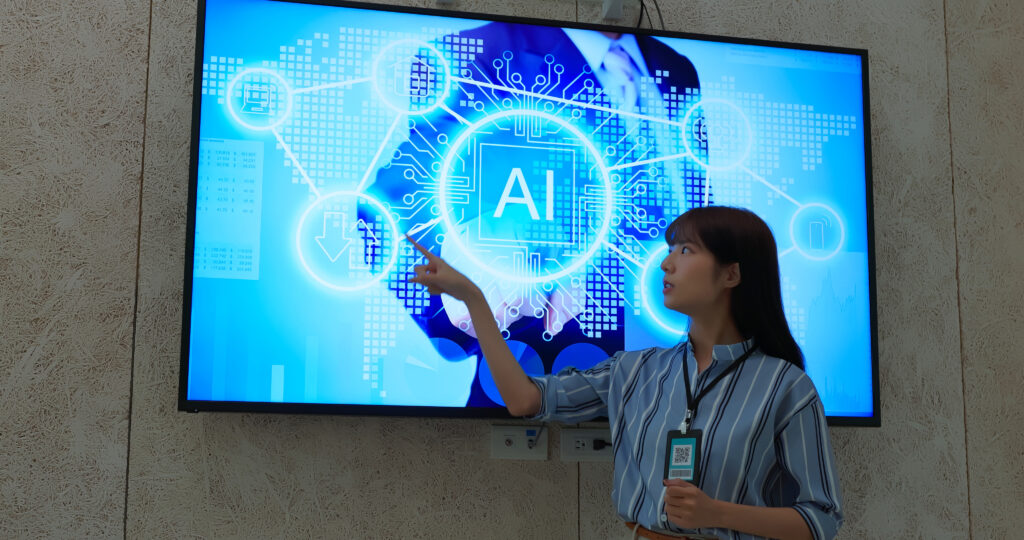
Generative AI
This is the trend you’ve likely heard the most about. Generative AI creates brand-new content—like text, images, and designs—from a simple prompt. Instead of starting with a blank slide, you can ask an AI to generate a first draft of your presentation, complete with visuals and talking points. This technology is a massive time-saver, helping you move from idea to a polished presentation in minutes.
The rise of AI agents
Think of an AI agent as the next step up from simple automation. These are smart programs that can act on their own to handle complex tasks for you. An AI agent can do more than just follow a preset rule; it can learn and adapt to new information to achieve a goal. For example, you could have an agent that researches a topic for your presentation, pulls the latest statistics, and even summarizes key articles for you. They can manage your schedule, analyze data for your quarterly review, or organize your project files. This trend points to a future where we delegate more of the background work to AI, freeing us up to focus on high-level strategy and creative thinking.
Self-supervised learning
This trend is a bit more behind-the-scenes, but it’s what makes AI so much smarter. Traditionally, AI needed humans to label huge amounts of data to learn from it (e.g., “this is a cat,” “this is a dog”). With self-supervised learning, AI can teach itself by finding patterns in raw, unlabeled information. For instance, it can identify patterns from vast amounts of student data to understand learning trends without being told what to look for. This capability allows AI tools to understand context and nuance much more deeply. For your presentations, this means an AI that can suggest more relevant visuals or content structures because it truly understands your topic, not just the keywords you used.

The push for ethical AI
As AI becomes more integrated into our lives, ensuring it’s used responsibly is more important than ever. The push for ethical AI focuses on making these systems fair, transparent, and accountable. This involves addressing biases that can creep into AI models, protecting user data, and making it clear how AI reaches its conclusions. For educators and professionals, this is a critical conversation. When you use an AI tool to help build a presentation, you need to trust that the information it provides is accurate and the images it suggests are appropriate and unbiased. This focus on ethics is essential for building long-term trust in AI technology.
How is generative AI changing how we work?
Generative AI has moved from a futuristic idea to a practical tool we can use every day. It’s fundamentally changing our workflows by acting as a creative partner. Instead of starting every project from scratch, we can now use AI to generate initial drafts, brainstorm ideas, and create visuals in seconds. This shift allows us to spend less time on tedious groundwork and more time on what truly matters: strategy, refinement, and adding a personal touch. From the classroom to the corporate office, AI is reshaping how we approach our tasks and define productivity.
Creating content in new ways
We’ve all stared at a blank page, waiting for inspiration to strike. Generative AI is a powerful remedy for writer’s block. It can take a simple prompt and instantly produce a presentation outline, a first draft of an email, or a list of blog post ideas. For instance, tools like Prezi AI can build an entire presentation for you, complete with text and images, turning your initial thought into a compelling visual story. This doesn’t replace your creativity; it accelerates it. You get to be the editor and director, refining the AI’s output to perfectly match your voice and message, which is a much more engaging starting point than a blinking cursor.
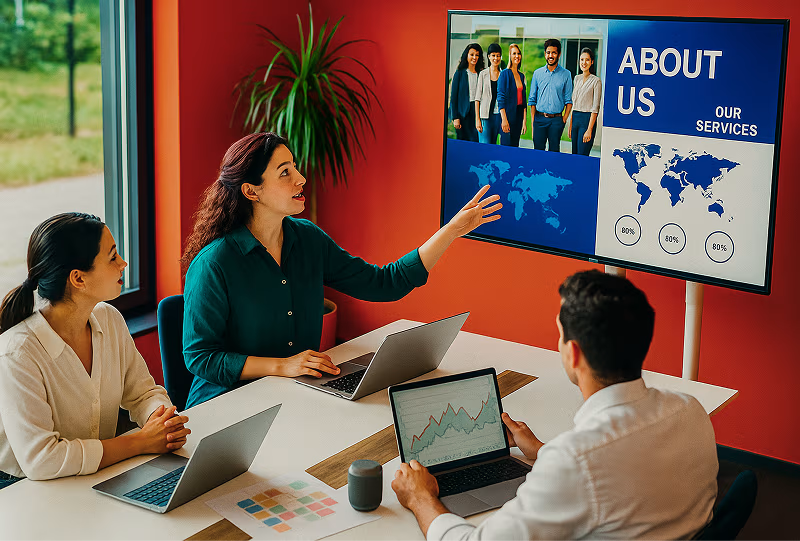
Making businesses more efficient
In any business, time is a precious resource. Generative AI helps teams reclaim hours by automating routine tasks. Think about the time spent summarizing long reports, transcribing meeting notes, or creating standard business presentations. AI can handle these jobs quickly, freeing up professionals to focus on complex problem-solving and strategic planning. When teams can create on-brand presentations and reports in a fraction of the time, they become more agile and productive. This efficiency isn’t about replacing people; it’s about augmenting their abilities so they can contribute more to high-impact work that drives the business forward.
New tools for education
Generative AI is opening up exciting possibilities for both educators and students. Teachers can use AI to design lesson plans, create engaging learning materials, and develop personalized assignments that cater to individual student needs. This gives them more time to focus on what they do best: teaching and mentoring. For students, AI can act as a 24/7 tutor, explaining complex concepts in different ways until they click. It also provides powerful tools for projects, helping students build dynamic presentations and organize their research. By making learning more interactive and accessible, AI is helping to create a more effective and supportive educational environment.
How do AI agents work?
AI agents stand out from traditional tools because of their autonomy, adaptability, and ability to handle complex tasks. Unlike standard automation programs that follow fixed rules, AI agents can make independent decisions in real time—like an expert driver navigating changing routes—to handle unexpected situations without your input.

They go beyond simple, one-off jobs by managing multi-step projects that require planning and coordination, such as preparing for a client meeting by creating an outline, pulling data, and summarizing insights. Most impressively, they learn and adapt as conditions change; if new information emerges, an AI agent can update its materials and suggest improvements proactively. This flexibility and intelligence make them the next evolution of software—dynamic partners that anticipate needs and act on your behalf in an ever-changing world.
Why is self-supervised learning so important?
Think of self-supervised learning as AI teaching itself. Instead of relying on humans to label every single piece of data—like tagging thousands of images as “good design” or “bad design”—this approach lets the AI model learn from the raw data itself. It does this by playing a sort of game: it takes a piece of data, like a sentence, hides part of it, and then tries to predict the missing part. By doing this millions of times, it starts to understand the underlying patterns and structures of language, images, and ideas without needing constant human supervision.
This is a huge leap forward. It means we can train incredibly powerful AI on the vast, unorganized information of the internet. For anyone creating presentations, this translates into smarter tools. An AI built with self-supervised learning can grasp the context of your topic, suggest more relevant visuals, and help structure your narrative in a way that feels intuitive. It’s the difference between an assistant that just follows a checklist and one that actually understands what you’re trying to achieve. This method is making AI more powerful, more efficient, and ultimately, more helpful for complex creative tasks like building a compelling presentation.
Self-supervised learning supports users in the following ways:
- Less need for labeled data: AI models can now find patterns in unlabeled data, making it more efficient
- Better performance on complex tasks: For presentations, this means an AI that doesn’t just spit out generic templates. Instead, it can help generate content that is contextually relevant, maintain a consistent tone, and even suggest design elements that align with your message.
- More adaptable across different fields: It’s incredibly versatile, allowing it to create a presentation from start to finish.
What can virtual assistants do?
Virtual assistants (VAs) are quickly evolving from simple command-takers to sophisticated partners. This leap forward is powered by AI that can understand context, work with different types of media, and even anticipate your needs. For anyone who creates presentations, this means having a powerful ally to help you brainstorm, design, and prepare, making the entire process smoother and more efficient.
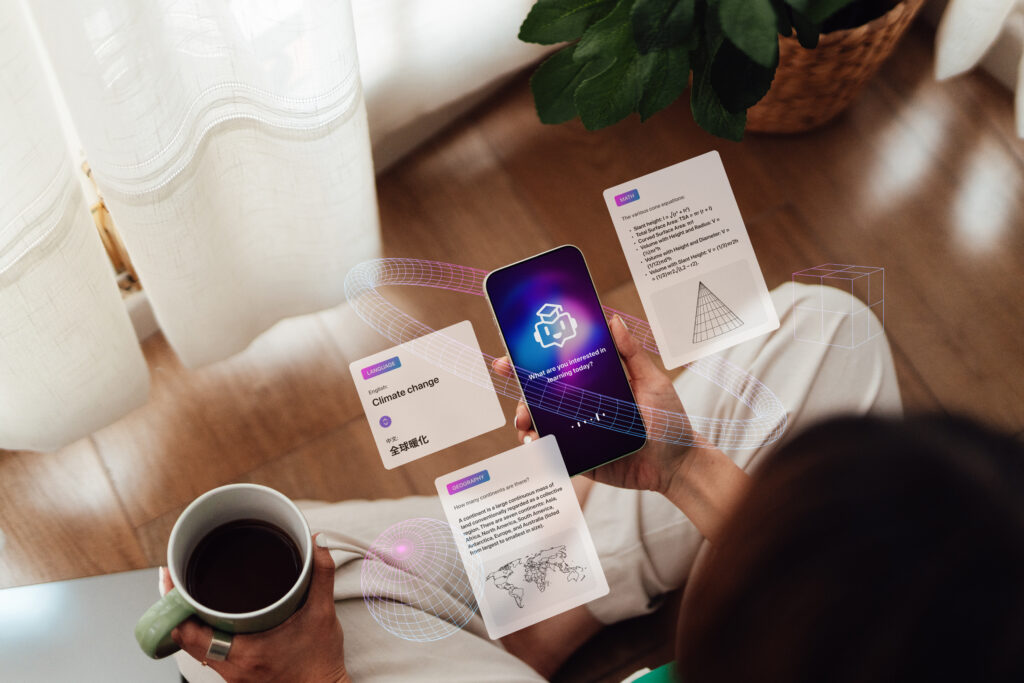
Understanding language better
One of the biggest changes is how well virtual assistants now grasp human language. Thanks to advances in natural language processing, they’re moving beyond keywords to understand nuance, intent, and context. This means you can have more of a real conversation. For example, you could ask an assistant to “find compelling stats about remote work for my presentation,” and it would understand you need data, not just a list of articles. VAs make it easier to refine your message and find the perfect supporting evidence for your next big talk.
Interacting through voice, text, and images
The conversation with AI is no longer limited to just your voice. Modern virtual assistants are becoming multimodal, meaning they can process and connect information from text, images, and speech. Instead of just being a chat window, AI is working behind the scenes to summarize information from various sources. You could drop a dense report and a few data charts into an AI tool and ask it to create a presentation outline.
Becoming part of our daily routines
Virtual assistants are also becoming more proactive, integrating seamlessly into our workflows. Instead of waiting for you to ask, they’re starting to anticipate what you need. An AI companion can see a presentation deadline on your calendar, suggest blocking off time to work on it, and pull up relevant research when you’re ready to start.
What is Edge AI, and why does it matter?
You’ve probably heard a lot about AI living in “the cloud,” but there’s another powerful trend that brings AI much closer to home: Edge AI. Simply put, Edge AI means the artificial intelligence processing happens directly on your device instead of being sent to a distant server. Think of it as having a mini AI brain right inside your tech.
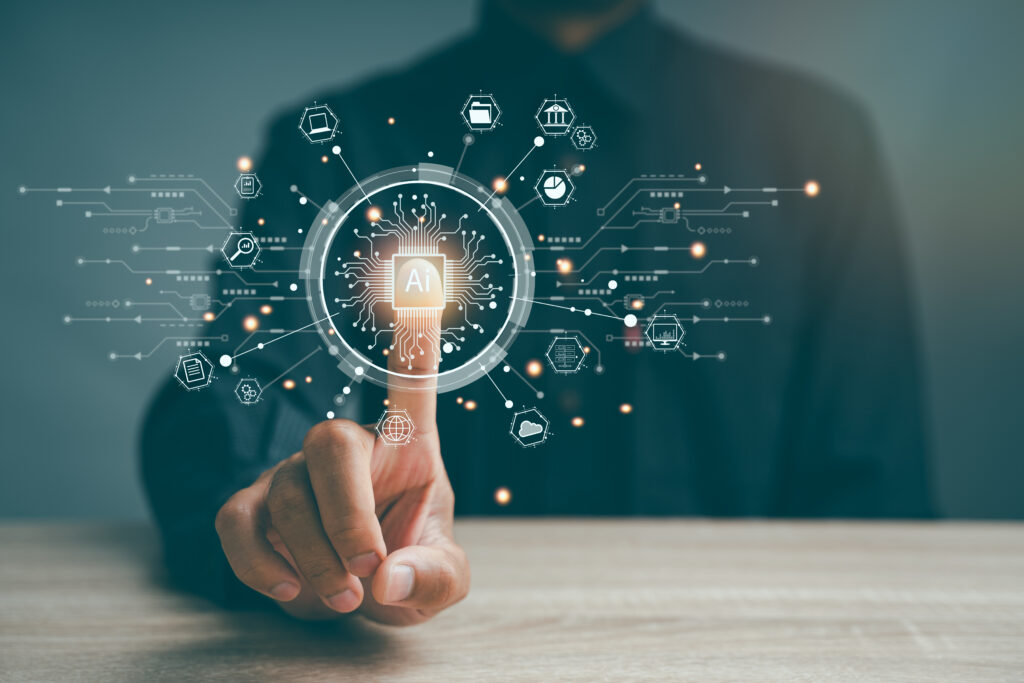
This shift from centralized cloud computing to local processing might sound technical, but it has some major real-world benefits. It’s the force that makes our smart devices faster, more reliable, and more secure. For anyone who creates and delivers presentations, understanding Edge AI helps explain why our tools are becoming so much more responsive and intuitive. It’s a key part of making technology feel less like a clunky machine and more like a seamless extension of our own ideas.
Keeping your data more private
One of the biggest advantages of Edge AI is that it enhances privacy by design. When AI processes information on your device, your personal or proprietary data doesn’t have to travel across the internet to a third-party server. This localized approach keeps sensitive information right where it belongs: with you. For professionals building a presentation with confidential company figures or educators working with student data, this is a huge deal. It significantly reduces the risk of data breaches and unauthorized access, giving you more peace of mind as you work.
Processing information in real time
Have you ever been frustrated by the lag when using an online tool? Edge AI helps eliminate that delay. By running algorithms locally, it enables faster processing of information. There’s no need to wait for your data to be sent to the cloud, processed, and sent back. This is especially important for interactive applications where immediate feedback is crucial. Imagine an AI presentation tool suggesting design changes or generating visuals on the fly—Edge AI makes that experience instant and fluid, so you can stay in your creative flow without interruption. (Which is exactly what Prezi AI does.)
How does AI improve cybersecurity?
As we rely more on digital tools for everything from team collaboration to creating presentations, keeping our information safe is a top priority. The same AI technology that helps us generate ideas and design slides is also becoming a critical part of our digital defense system. Think of it as a highly intelligent security guard that works around the clock. Instead of just reacting to problems, AI helps security teams get ahead of them. It’s constantly learning, adapting, and looking for trouble so we can work and create with greater peace of mind. AI is transforming cybersecurity by predicting threats before they strike, responding to incidents in the blink of an eye, and finding hidden weaknesses in our digital walls.

Predicting threats before they happen
One of the biggest advantages of AI in cybersecurity is its ability to see trouble coming. Instead of waiting for a security breach to happen, AI systems analyze massive amounts of data—like network traffic and login attempts—to find unusual patterns that could signal an attack. This proactive approach is essential because while AI can be used to create more sophisticated attacks, it’s also our best defense. It helps security teams detect potential data breaches early, pushing organizations to adopt stronger security habits. It’s like having a security system that not only alerts you to an intruder but warns you that someone is scoping out your building days in advance.
Responding to incidents automatically
When a security threat is detected, speed is everything. A delay of just a few minutes can be the difference between a minor issue and a major crisis. Human security teams can easily get overwhelmed by the sheer volume of alerts they receive. This is where AI steps in to automate the initial response. AI systems can sift through huge amounts of data in real time, enabling them to respond to threats almost instantly. This could mean automatically blocking a suspicious IP address or isolating an affected device to stop a threat from spreading, all while minimizing potential damage. This automation frees up human experts to focus on more complex problem-solving and strategy.
Finding security weaknesses
The strongest defense is one with no holes. AI is incredibly effective at finding and fixing security vulnerabilities before cybercriminals can exploit them. It can continuously scan software code, computer networks, and entire IT systems to look for weaknesses. This goes beyond just checking for known issues; AI can also identify new, previously unseen flaws in a system’s architecture. This capability is a game-changer for security analytics. It gives teams the power to identify vulnerabilities and patch them up long before they become a problem. By proactively strengthening defenses, AI helps make our digital environments more resilient and secure for everyone.
What are the ethical challenges of AI?
As we integrate AI into our creative and professional workflows, it’s important to have a clear-eyed view of the challenges that come with it. Using AI tools responsibly means understanding their limitations and potential pitfalls. This isn’t about slowing down progress; it’s about moving forward thoughtfully and making sure the technology works for everyone. By staying aware of these ethical considerations, you can use AI to create amazing presentations while upholding your own standards for quality, fairness, and integrity. The key is to treat AI as a powerful assistant—one that still requires your critical eye and human judgment to guide it.

Addressing bias in AI systems
AI systems learn from the vast amounts of data they’re trained on, and that data comes from us. Because human language and images contain historical and systemic biases, AI can unintentionally learn and even amplify these prejudices. For example, an AI might generate content that reinforces stereotypes or excludes certain groups. When creating presentations, this could show up in AI-generated images that lack diversity or text that uses biased language. The best way to counter this is to actively review AI-generated content. Think of yourself as the final editor, responsible for ensuring the material is fair, inclusive, and represents your message accurately. This human oversight is essential for preventing the spread of algorithmic bias.
Ensuring transparency and accountability
Have you ever wondered how an AI tool comes up with a specific answer? Sometimes, the decision-making process of an AI is like a “black box”—we see the input and the output, but not the steps in between. This lack of transparency can be a problem when you’re building a presentation that needs to be credible and trustworthy. If an AI provides a statistic or a key talking point, you need to be able to verify it. That’s why it’s crucial to build trust in AI by treating its suggestions as a starting point for your own research. Always ask where the information came from and double-check your sources before presenting them to an audience.
Protecting data privacy
AI models, especially generative ones, require a lot of data to function. When you use an AI tool, you might be inputting sensitive information, whether it’s personal details, proprietary company data, or confidential research for your next presentation. This is why you should know how to evaluate AI models. Where does your information go? How is it being used? Before you paste a confidential document into an AI summarizer, take a moment to consider the implications. It’s good practice to familiarize yourself with the privacy policies of the AI tools you use and to avoid inputting highly sensitive information unless you’re certain it’s secure. Understanding data privacy and AI is key to protecting yourself and your organization.
Managing AI reliability and safety
While AI is incredibly capable, it’s not infallible. AI models can sometimes “hallucinate”—a term for when they generate incorrect or completely fabricated information with complete confidence. For a presenter, this is a major risk. Citing a fake statistic or a made-up historical event in a presentation can instantly damage your credibility. The solution is simple: always fact-check. Treat AI-generated content with a healthy dose of skepticism. Verify dates, names, statistics, and any other factual claims against reliable sources. Ensuring AI safety in your own work means taking responsibility for the final output and making sure every piece of information you present is accurate and true.
Prezi AI: One of the best AI presentation tools
Among the many AI presentation tools transforming how we create, Prezi AI is a standout example of how technology can truly amplify human creativity. It’s not just a tool—it’s a creative partner designed to help you turn ideas into visually dynamic presentations in minutes. With Prezi AI, you can start from a simple prompt and instantly generate a complete presentation with structure, text, and images tailored to your topic. Its intelligent design engine understands context, so your slides don’t just look polished—they tell a cohesive story that fits your message and audience.
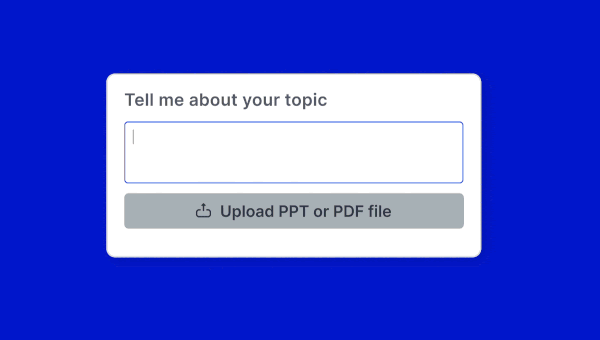
Prezi AI also adapts as you refine your content. You can adjust tone, simplify complex ideas, or reformat slides for different audiences with a few quick prompts. And because it’s built with collaboration and performance in mind, you can move seamlessly from AI-generated drafts to human creativity—adding your personal touch where it matters most. Whether you’re an educator, marketer, or team leader, Prezi AI helps you save time, reduce creative friction, and present with confidence. In a world where AI is shaping the next generation of storytelling, Prezi AI is redefining what it means to create with intelligence and imagination.
Prezi AI is the future of AI-generated presentations. Put simply, it takes your content and transforms it into content that’s ready to present.
How can you prepare for an AI-driven future?
Preparing for an AI-driven future isn’t about mastering every new tool—it’s about staying curious, adaptable, and thoughtful in how you use them. By building AI literacy, setting clear guidelines, embracing change, and sharpening your critical thinking, you can turn AI into a true collaborator rather than a challenge. Start exploring how AI can elevate your creativity and productivity—try Prezi AI today and see how effortless great presentations can be.
